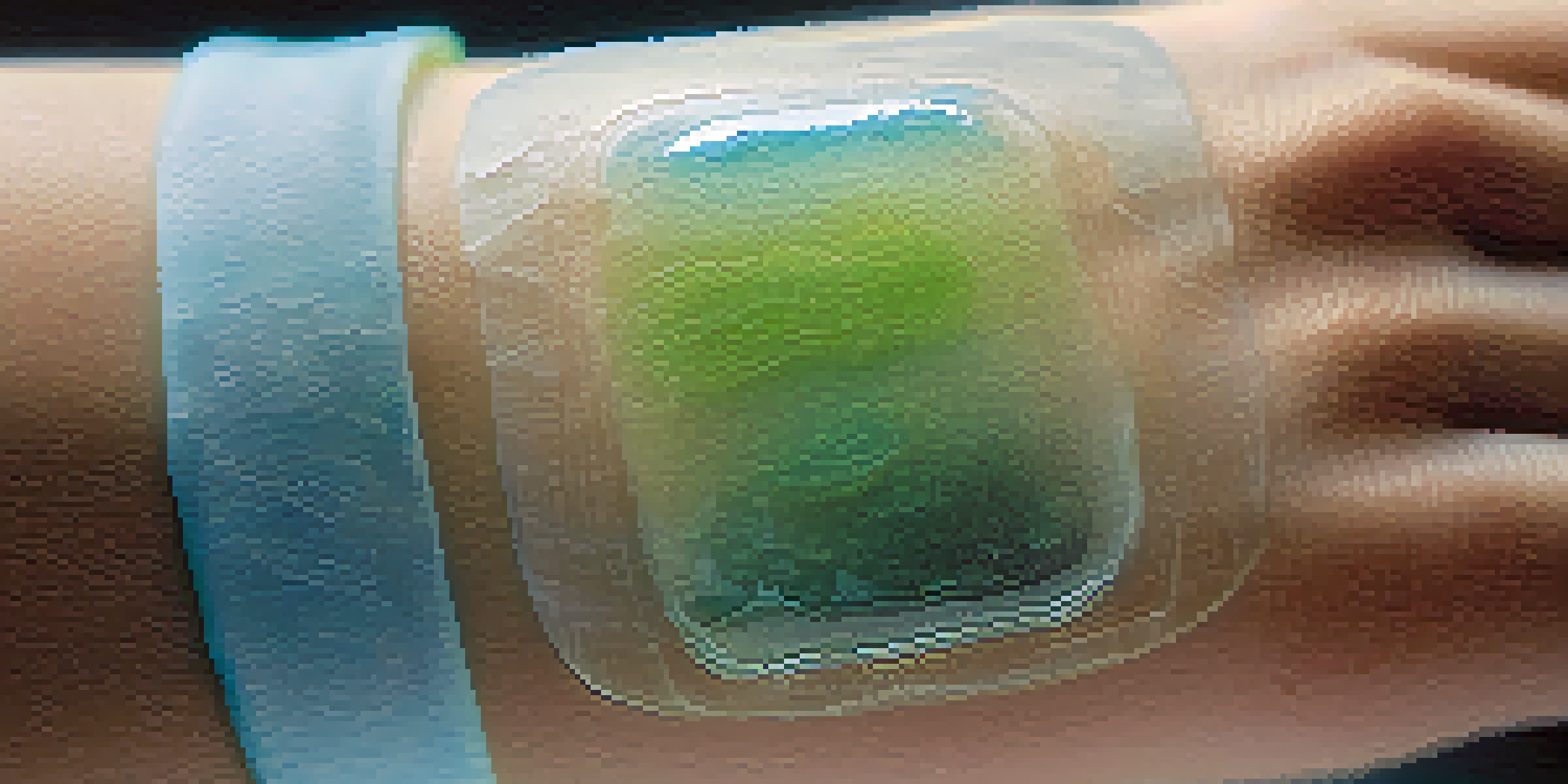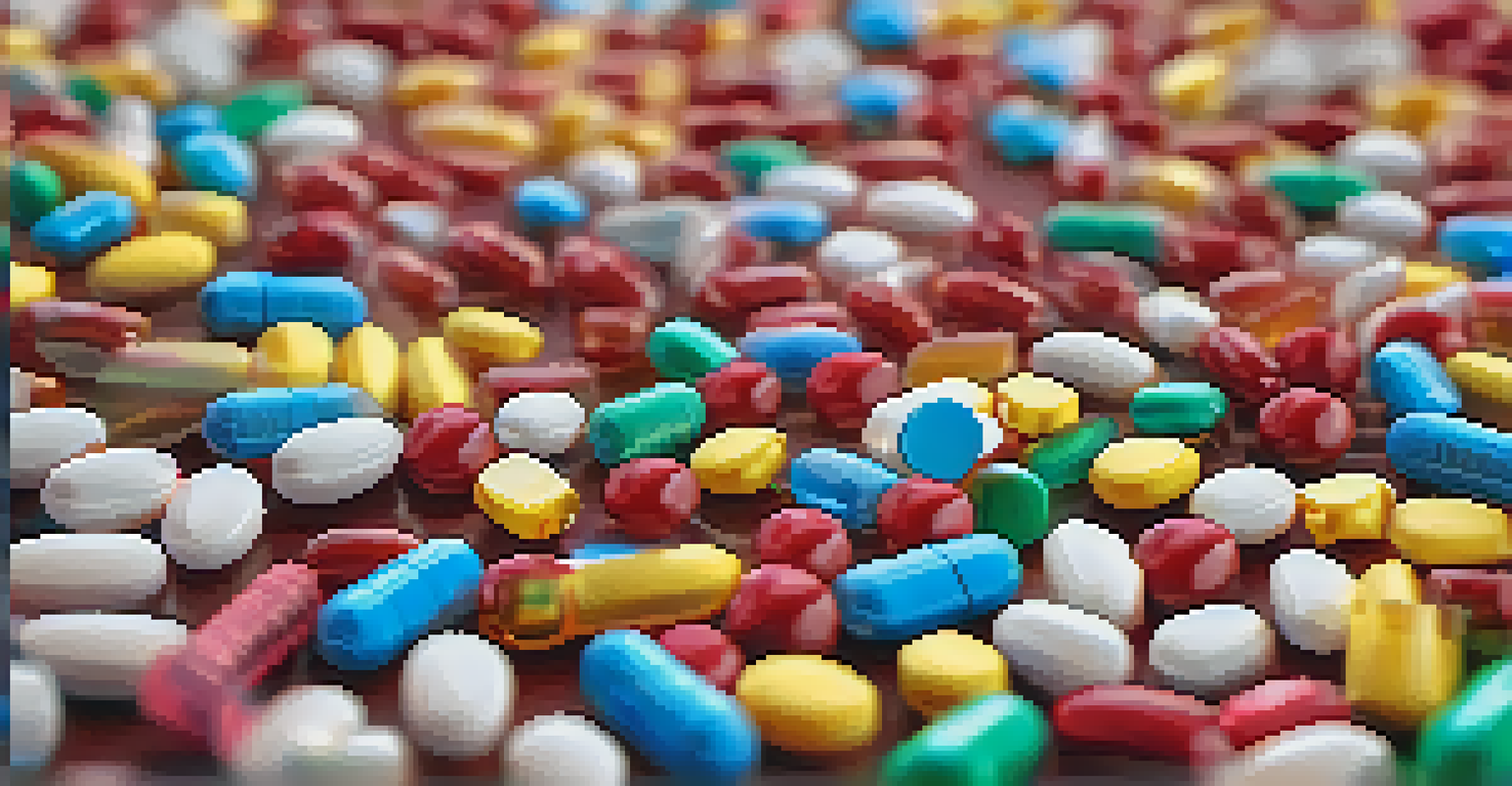Smart Hydrogels: Responsive Systems for Drug Release

Understanding Smart Hydrogels and Their Functionality
Smart hydrogels are unique materials that can change their properties in response to environmental stimuli, such as temperature, pH, or light. This adaptability makes them particularly valuable in biomedical applications, especially for drug delivery. Imagine a sponge that expands or contracts based on the surrounding conditions—that's similar to how smart hydrogels work.
The future of healthcare lies in the precision of personalized medicine, where treatments are tailored to individual patient needs.
The core of smart hydrogels is their polymer structure, which allows them to absorb significant amounts of water while maintaining their shape. This capability not only enables them to deliver drugs efficiently but also mimics natural tissues, enhancing biocompatibility. By utilizing such materials, researchers can create drug delivery systems that are more effective and patient-friendly.
Moreover, the ability to tailor these hydrogels to respond to specific triggers means that medications can be released at the right time and place in the body. This precision is akin to having a time-release capsule that opens only when it reaches the intended destination, maximizing therapeutic effects while minimizing side effects.
Key Advantages of Using Smart Hydrogels in Drug Delivery
One of the standout benefits of smart hydrogels is their controlled release mechanism. Unlike traditional drug delivery methods that may lead to spikes in drug levels, smart hydrogels can provide a steady release, ensuring consistent therapeutic effects. This is particularly crucial for chronic conditions where maintaining stable drug levels is essential.

Additionally, smart hydrogels can be designed to respond to specific biological triggers, such as an increase in temperature at an inflamed site. This means that they can release medicine precisely when and where it's needed most, much like a GPS that directs you to your destination without detours. Such targeted delivery enhances the overall efficacy of treatments.
Smart Hydrogels Enable Targeted Drug Delivery
These innovative materials release medications precisely at the right time and place, enhancing treatment efficacy.
Finally, the customization potential of smart hydrogels allows for personalized medicine approaches. By tailoring these materials to individual patient needs, healthcare providers can improve patient outcomes, making treatments more efficient and reducing the likelihood of adverse reactions.
Applications of Smart Hydrogels in Medicine
Smart hydrogels have found diverse applications in the medical field, particularly in drug delivery for cancer therapies. For instance, hydrogels can be engineered to release chemotherapeutic agents directly at tumor sites, minimizing damage to surrounding healthy tissues. This localized treatment is akin to using a sniper instead of a shotgun—targeted and precise.
Innovation distinguishes between a leader and a follower.
Another exciting application is in the realm of wound healing. Smart hydrogels can be infused with growth factors that are released in response to the wound's microenvironment, promoting healing and tissue regeneration. This dynamic approach transforms traditional bandages into active healing agents, accelerating recovery.
Beyond these uses, researchers are exploring smart hydrogels for vaccine delivery. By controlling the release of antigens, these systems can help improve the immune response, making vaccines more effective. It’s a game-changer that could enhance public health outcomes significantly.
Challenges in Developing Smart Hydrogels
Despite their potential, developing smart hydrogels presents several challenges. One significant hurdle is ensuring the stability of these materials over time. If a hydrogel degrades too quickly or not at all, it can compromise the efficacy of the drug being delivered, much like a time-sensitive mission that fails due to poor planning.
Another challenge is achieving a balance between responsiveness and biocompatibility. While making hydrogels that react to specific stimuli is crucial, they must also be safe for the body. It’s essential to navigate this delicate balance to ensure that the materials do not induce an adverse immune response.
Customization Enhances Patient Care
Smart hydrogels can be tailored to individual patient needs, improving outcomes and reducing adverse reactions.
Finally, scalability poses a significant obstacle. Producing these smart hydrogels on a commercial scale while maintaining quality and performance can be daunting. Researchers must find ways to streamline manufacturing processes without sacrificing the unique properties that make these hydrogels effective.
Future Perspectives on Smart Hydrogels
The future of smart hydrogels in drug delivery looks promising, with ongoing research paving the way for innovative solutions. Scientists are continuously exploring new materials and combinations that could enhance the performance of these hydrogels, making them even more efficient. This research is akin to a treasure hunt, where each new discovery brings us closer to unlocking their full potential.
Moreover, advancements in nanotechnology are expected to play a critical role in the development of smarter hydrogels. By integrating nanoparticles, researchers can design hydrogels that offer enhanced drug loading capacities and more precise release profiles. These developments could revolutionize how we approach treatment plans across various medical conditions.
As we look ahead, the integration of smart hydrogels with digital technologies could also transform drug delivery. Imagine a hydrogel that communicates with a smartphone app to adjust drug release based on real-time health data. Such innovations could not only improve treatment outcomes but also empower patients to take control of their health.
Real-World Examples of Smart Hydrogel Applications
Several companies and research institutions are already harnessing the potential of smart hydrogels in real-world applications. For instance, one notable product is a smart hydrogel patch designed for chronic wound management, which releases antibiotics in response to infection markers. This proactive approach can significantly reduce the risk of complications and improve recovery times.
Another exciting example is the use of smart hydrogels in diabetes management. Researchers are developing hydrogels that can release insulin based on blood glucose levels, creating a more natural and responsive way to manage this condition. It’s like having a personal assistant that knows exactly when to step in and help.
Challenges in Development Persist
Despite their potential, issues like stability, biocompatibility, and scalability remain significant hurdles in the advancement of smart hydrogels.
These examples highlight how smart hydrogels are not just theoretical constructs; they are making tangible impacts in the medical field. As research continues and technology advances, we can expect to see even more innovative applications that improve patient care and treatment efficiency.
Conclusion: The Promise of Smart Hydrogels in Healthcare
In conclusion, smart hydrogels hold immense promise for revolutionizing drug delivery systems in healthcare. Their ability to respond dynamically to environmental changes offers unprecedented control over how and when medications are released. This tailored approach not only enhances treatment efficacy but also improves patient experiences.
As challenges in development are addressed and new applications are explored, the future of smart hydrogels looks bright. With ongoing research and technological advancements, we may soon see these innovative materials becoming standard practice in various therapeutic areas. It’s an exciting time for both researchers and patients alike.

Ultimately, the journey of smart hydrogels reflects a broader trend in medicine towards personalization and precision. By prioritizing patient needs and leveraging cutting-edge technology, smart hydrogels are poised to change the landscape of drug delivery, making healthcare more effective and accessible for everyone.